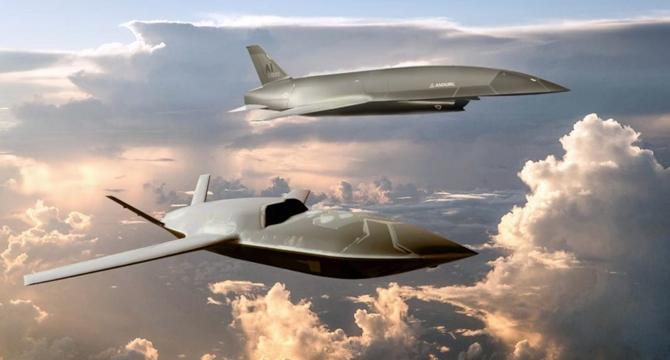Insider
3w
256

Image Credit: Insider
See the Anduril and General Atomics drones the US Air Force just marked as the first-ever uncrewed fighter jets
- The US Air Force designated two drone prototypes, YFQ-42A and YFQ-44A, as the first-ever uncrewed fighter jets under the next-generation air dominance program.
- These combat aircraft, dubbed 'loyal wingmen,' are intended to work alongside crewed F-22s and F-35s on missions and offer both autonomous and collaborative capabilities.
- The U.S. Air Force seeks to enhance its fleet with cost-effective uncrewed fighters to augment existing airpower amidst rising aircraft development costs.
- Amid China's military growth, the focus on next-generation aircraft and autonomous systems aims to fortify U.S. airpower in the region.
- The cost of uncrewed combat aircraft (CCAs) is estimated to be significantly lower than crewed fighters, providing greater affordability and survivability in conflicts.
- The Air Force plans to acquire around 1,000 CCAs to support advanced fighter jets and has awarded contracts to several defense contractors for CCA development.
- Initial prototypes for CCAs have been produced by Anduril and General Atomics, with plans to order more drones in the coming years to advance U.S. military capabilities.
- The General Atomics XQ-67A and Anduril's Fury drones are part of the CCA program, designed for mission flexibility, affordability, and seamless integration with crewed jets.
- The innovative approach of utilizing uncrewed fighters signifies a new chapter in aerial warfare, showcasing advanced technology and strategic developments in military aviation.
- The future of military aviation is evolving towards a hybrid crewed-autonomous fleet to enhance operational capabilities and adapt to changing global security challenges.
- With a focus on affordability, efficiency, and combat effectiveness, the integration of uncrewed fighter jets marks a significant progression in U.S. defense strategy and technology.
Read Full Article
15 Likes
For uninterrupted reading, download the app